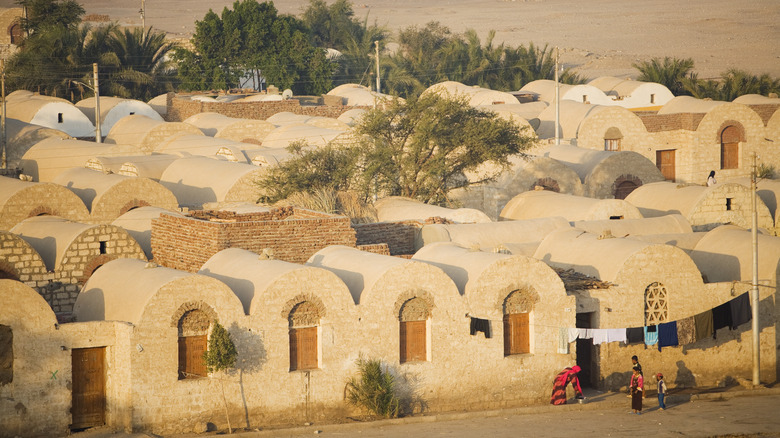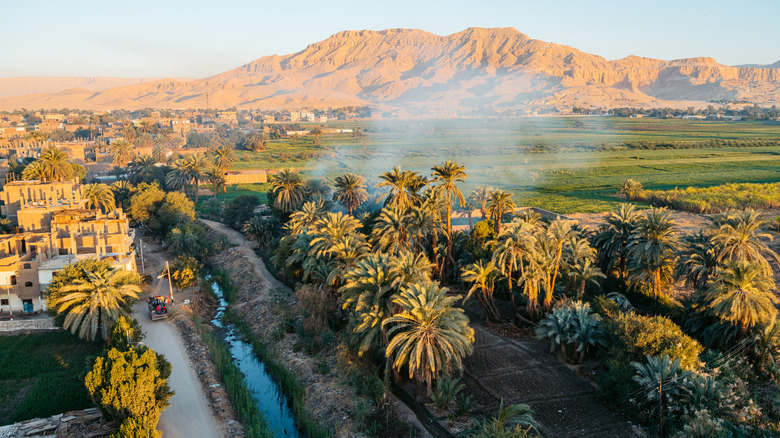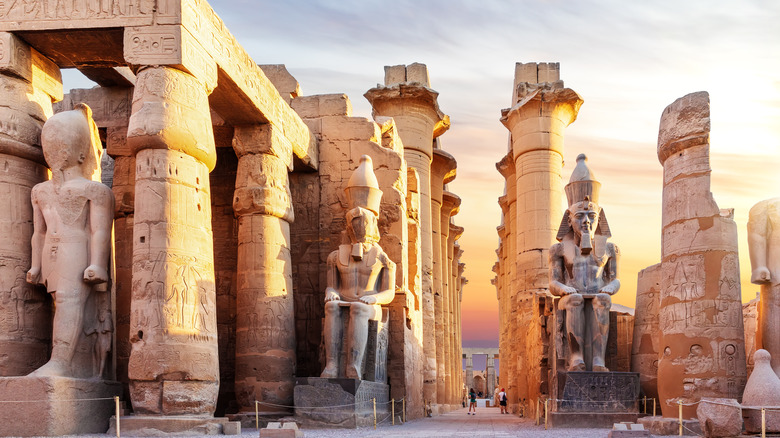This Vibrant Egyptian Gem Challenged Rick Steves' Understanding Of Small Towns
When you think of a visit to Egypt, you've probably got Cairo in your head. It's no surprise. The Great Pyramids are wonders of the world and it's a once-in-a-lifetime, bucket list trip to see them for so many of us. However, Cairo isn't what all of Egypt is like. Travel pro Rick Steves suggests on his website that there is another town to visit, and not just for the astonishing ancient temples. This place is Luxor, and he says that it's "A lush brown-and-green world of reeds, sugarcane, date palms, mud huts, and a village world amazingly apart from what the average tourist sees."
Getting a different view of a place beyond its hot tourist spots is always a gamble if you don't know where to look, but Luxor was a profound experience for Steves. He met villagers, spent time seeing their houses, and learned about their lives, and it changed his view of small towns. He says, "I spent more time in and around Luxor than in any European small town, and I could have stayed longer ... For me, five days in a small town is asking for boredom. But Luxor fills five days like no town its size." That's a pretty glowing endorsement. Here's what you need to know about Luxor and what Steves says are the best things to do.
Getting to Luxor and things to know
You can't skip Cairo, nor should you. It's the perfect launching-off point for Luxor, according to Steves. He recommends an overnight train from Cairo to Luxor, which takes about 10 hours, with a single sleeper cabin for about $130 per person, or a bed in a double cabin for $90 per person. Dinner and breakfast is included, and the door locks. You can book tickets here.
Steves says he met some wonderful locals, talking about a little girl who was carrying food for the family water buffalo on her head, and a woman who gave him a tour of her home. He explains that he saw " ... people scurry, grabbing their families to see the American who chose them over King Tut. I'm sure, somewhere in the Egyptian babble, were the words, 'My house is your house.' They would have given me the key to the village, but there were no locks." In fact, he says that this is how most people live in Egypt. What a wonderful thing to experience, getting to see what real life is like outside of tourist areas.
Steves says you must always bring water. Heat stroke is a real danger, and hydration is key. You should also keep the country's dress styles in mind while packing. He also suggests doing your sightseeing really early in the morning before it heats up. In fact, early morning is a time Steves generally suggests as the best wherever you're visiting.
What to see in Luxor
As to what to do in Luxor itself, Steves mentions getting an inexpensive custom-made, monogrammed caftan, wandering the local shops, and even visiting the camel market. Even better? You can take a horse and carriage to visit Karnak Temple (above) in the early morning, rest midday, and enjoy a boat ride on a felucca — a traditional wooden sailboat — (with rides starting around $10) on the Nile while the sun sinks below the horizon. The 1,500-year-old complex of obelisks, sanctuaries, and more is one of the most impressive things you'll ever see, with the Temple of Amun in the center.
Don't skip the Luxor Museum, which opened in 1975 and has some incredible artifacts, including the impressive Wall of Akhenaten. Steves also suggests a tour to Aswan to the south. That said, the town of Luxor itself is what charmed him, and he says a great way to see it is to rent a bike and simply ride around. He does mention renting donkeys as well to see the sights, but suggests that it might not be what you're looking for in the heat. However, Steves points out that the local taxis are horse-drawn carriages, which is lovely. The one caveat is that no matter what you tip, you will be asked for more, so just give what you feel is fair.


